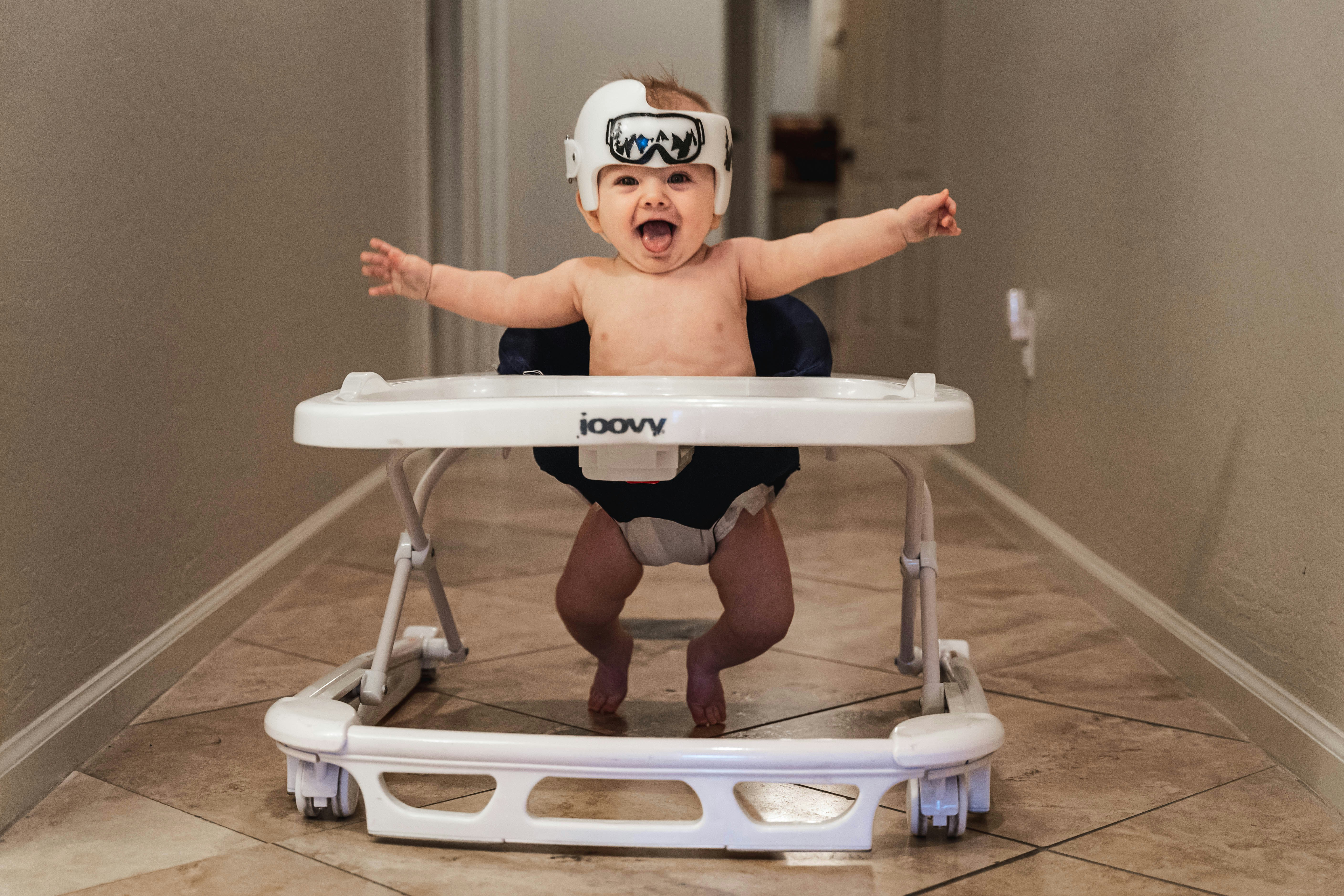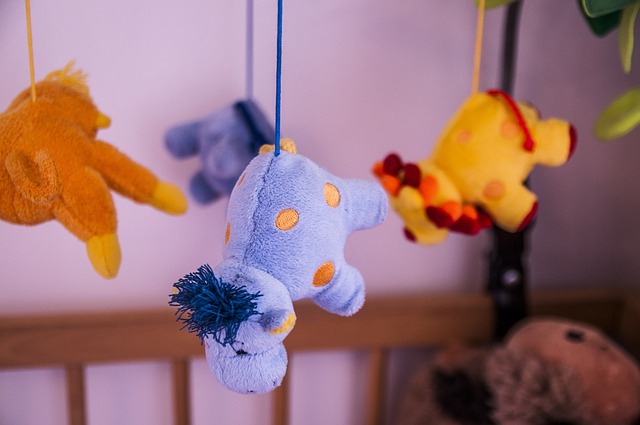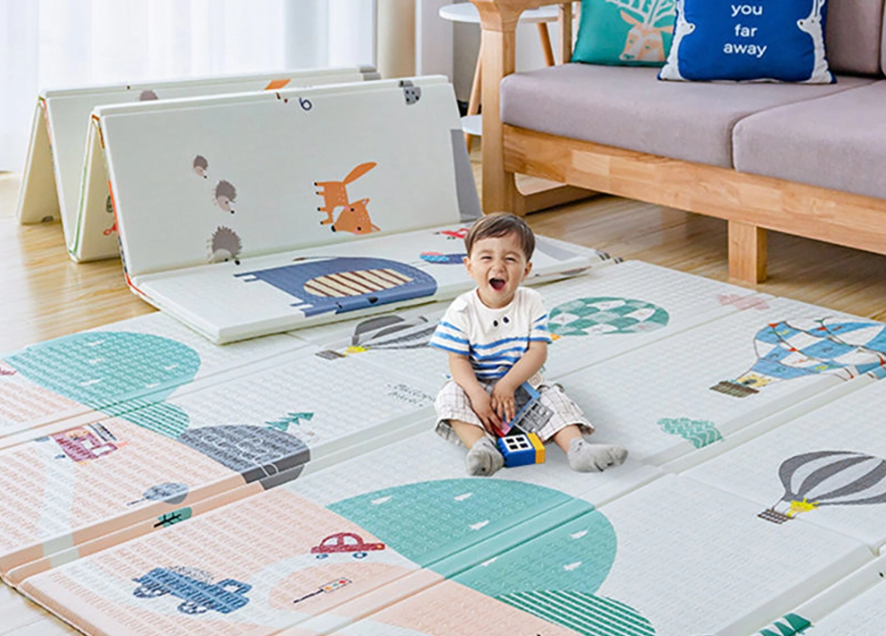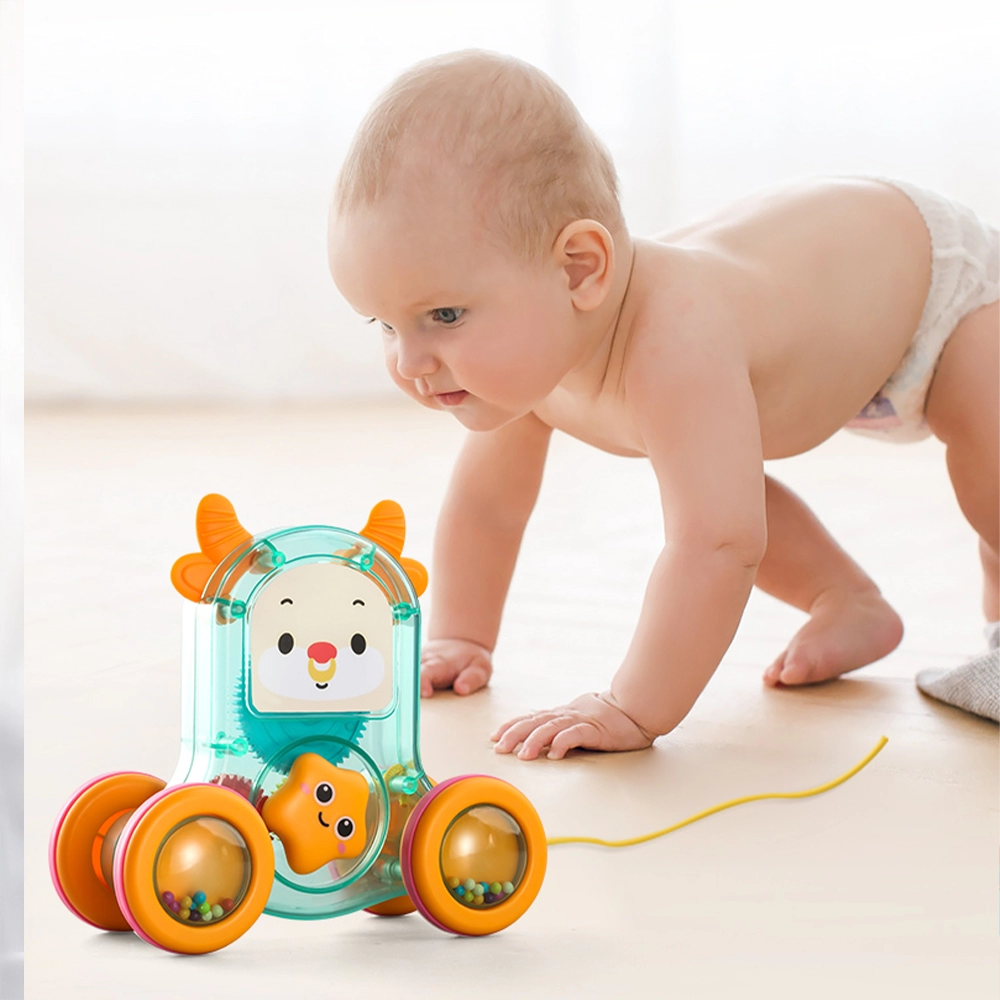English
Best Baby Toys for 0-12 Months: A Comprehensive Guide
Choosing the right and best baby toys during baby' first year is essential for their development. This blog covers the best toys for each stage, from lying down to walking, helping stimulate their senses, enhance motor skills, and support cognitive growth. Whether it's colorful mobiles for newborns or pull-along toys for toddlers, find the perfect toys to aid your baby's development and ensure safe, joyful play.
First stage: (1-3 Months Playing Lying Down)
According to the law of nerve myelination at 1-3 months: eyes-neck-arms. We can prepare some toys that can stimulate the baby's vision. By 2-3 months, we can gradually introduce toys that the baby can touch.
[Recommendation] Colorful Hanging Toys: Rotating Musical Mobile
It is said that when a baby is born, he is like a little "nearsighted eye". At first, he can only distinguish between light and dark, and black and white patterns, circles and blocks with strong color contrast will attract his attention. The crib mobile can be hung at a distance of 20-30 cm from the baby's eyes at first. As the baby grows up, the position needs to be gradually adjusted and changed. When the baby is a little older, you can add a scarf or a bell where the baby can reach the hand to exercise the baby's arm.
After 1 month, the child's vision slowly develops, and parents can start to replace other bells. According to the baby's preferences, observe which one he is most interested in and hang it. Rotating music bed bells can promote the development of his vision and hearing. But in the selection process, remember to choose the one with relatively soft music, so it is not easy to hurt the baby's tender ears.
[Recommendation] Soft Touch Comfort Doll: Wrist Doll
At this stage, the baby is not very used to toys with hard touch. Choosing some soft comfort toys will make the baby feel comfortable and peaceful. The wrist doll specially designed for babies has soft and comfortable fabrics, which is safe even if the baby bites and licks it, and it is easy to clean. The cute animal shape design, put on the baby's hands or feet, the pleasant bell sound will make the baby feel curious, and slowly establish the connection between cause and effect. It can also let the baby learn to grasp, train the baby's hand muscles, and accompany the baby to grow happily.
[Recommended] Piano Gym
A 2-month-old baby begins to understand the order of things. When he is excited, he will naturally kick his feet and dance his hands. The piano gym, through the baby's natural kicking action, the flashing lights will "dance" with interesting music and animal sounds. The ornaments hanging above the baby's head attract the baby to reach out to tease, promote the development of arm and leg muscles, and provide a variety of sensory stimulation for the baby. The piano gym can accompany the baby until he is about 3 years old. Slightly older babies can sit and play, and can be used as a standing armrest when learning to walk, killing two birds with one stone.
[Recommendation] Visual Stimulation Cards
The first year after birth is the fastest stage of visual development for babies. Parents hold the card and let the baby look at the card from the front for 6-8 seconds at a distance of about 30cm from the baby. While showing and explaining, the baby's hearing and vision are well stimulated, strengthening his visual response and improving visual attention. When the baby grows up, you can also use cards for parent-child interaction to let the baby recognize patterns and colors.
Tips: Black and white cards can be selected for baby visual stimulation at first, and colors can be gradually added from 4-10 months, and more rich colors can be added from 7-12 months to help the baby improve visual ability.
Second stage: (4-6 Months Rolling Over to Sitting with Support)
At 4-6 months, with the development of myelination, the little guy who is no longer lying down is no longer quiet. Touch with your hands to feel how it feels; use your eyes to see the various colors of the toys; taste with your mouth to taste the taste of the toys; listen to the different sounds with your ears. At this stage, we can prepare toys that stimulate hand muscles and eye-hand coordination. Some babies will begin to grow teeth. They often need to take things to their mouths. It is best to give them toys that can be bitten. Not only should you be careful that small things are swallowed by mistake, but you should also pay attention to the hygiene of these things.
[Recommendation] Safe and Eco-Friendly Rattles or Teethers
When purchasing rattles, you should not only pay attention to whether the materials used are safe and non-toxic, whether the paint is easy to fall off and be eaten by the baby, but also pay attention to whether the sound made by the rattle when shaking is soft and will not hurt the baby's hearing.
[Recommendation] Colorful Sensory Massage Balls
Small balls with different touches can well stimulate the baby's tactile perception ability. Bright colors can stimulate the good development of the visual system and promote the baby's color cognition. The hand-caught ball that pinches and calls can well stimulate the baby's auditory system and promote auditory development. When bathing, it can also be used as a toy to bring unlimited fun to the baby.
[Recommendation] Play Mat or Crawling Mat
After the baby learns to turn over, he is no longer confined to the crib. You can prepare a suitable game blanket or crawling mat in a suitable open space in the living room. While increasing the baby's activity space, prepare for future crawling. Cute babies can also see patterns of different colors by turning over, reach out to touch their favorite toys, and promote good development of vision and touch.
Third Stage: (7-9 Months Sitting to Crawling)
The baby can sit alone at 7-9 months old, and will change his posture to find a better view.
Their eye-hand coordination will be further refined. Usually, he likes to knock, throw things, and start to imitate. He can distinguish different sounds and melodies, and has a certain concept of the size and height of objects. In the past, he could only reach out to grab, touch, turn his wrist, and put it in his mouth. Now, he can do more delicate movements. For example, take it out, put it in, and let go. Parents can prepare new eye-hand coordination toys for the baby.
[Recommendation] Rainbow Stacker or Multi-Function Activity Box
Whether it is a tumbler-style rainbow tower or a multifunctional game table. Their color gradients and various shapes are all loved by babies. A simple set of toys can be played in many ways. Hand-eye coordination requires the baby to mobilize the visual system to carefully observe the position of the rainbow tower and the activity box, and then use his hands to play games. The colorful design, brisk tone, and smooth touch are all good exercises for the baby's various senses.
[Recommendation] Bell Animal Cognition Ball
Bright colors and cute animal designs promote the baby's visual development. When rolling, it makes a bell sound to train the baby's hearing. The constant action of picking up and putting the ball and chasing the ball can well exercise the baby's tactile and motor development.
[Recommendation] Sound-Controlled Crawling Toys
Crawling is an important step for babies to learn, which helps the development of baby's motor coordination and deep sense, and enriches the connection between the brain and brain. Putting interesting intelligent toys with light and sound effects in front of the baby can inspire the baby to move his body to chase it, which not only stimulates the baby's hearing ability, but also develops the baby's early motor skills and cognitive desire.
Fourth Stage: (10-12 Months Standing to Walking)
In this stage, neurons slowly myelinate to the legs and feet. Through repeated muscle exercises, children begin to stand and walk. The future days of toddlers will be full of exploration, temper and uninterrupted actions. The hand muscles can also make more precise movements.
[Recommendation] Pull-Along Toys
Pull-along toys are one of the classic toys in the toddler stage, and they can achieve the effect of physical exercise during the play process. You can choose wooden toys and let your baby reach out to feel the unique warmth and vitality of wood. The transformation of wood color and other colors can well stimulate the baby's distinction between colors. Parents can also help the baby establish interactive connections with the pull-and-pull animals to promote the baby's language development.
Note: When choosing pull-along toys, long ropes can easily entangle the baby's body and hands, which can cause danger. Be sure to choose short rope pull-and-pull toys designed from a safety perspective to ensure the safety of the baby's activities.
[Recommended] Game Table that Encourages Standing and Walking
Babies who have just learned to stand are full of curiosity about the world. Choose a game table that can encourage standing and walking, press buttons, slide keys, tap keys, and different sound effects to exercise the baby's sense of touch and hearing. While playing, the baby can also walk around the small table to exercise his lower limb strength.
[Recommendation] Multi-Function Walker
For babies who cannot walk independently but are full of desire to explore, it is still necessary to be able to move around the house by themselves. Multifunctional strollers can fully develop the baby's hearing, touch, vision, small movements and large movements. At the same time, it can also subvert the constraints of traditional walkers on baby's walking, prevent O-shaped legs, and escort the baby's learning to walk. The biggest worry about walkers is that the speed is too fast. It is recommended to buy one with adjustable speed, which is safer.



